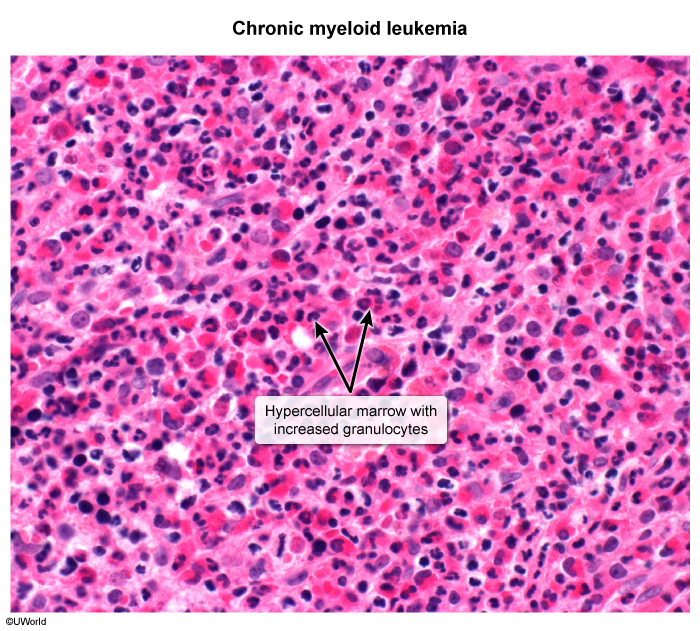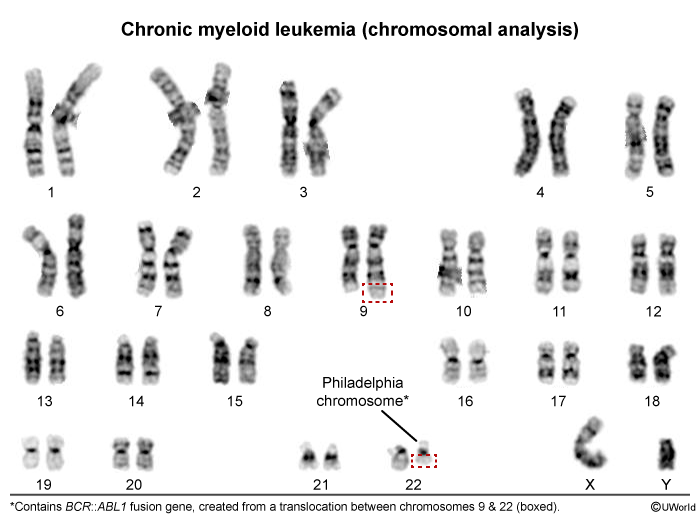Chronic Myeloid Leukemia
Article Sections
Introduction
Chronic myeloid leukemia (CML) is a myeloproliferative neoplasm characterized by the uncontrolled proliferation of myeloid cells due to BCR::ABL1 gene fusion. CML accounts for about 15%-20% of adult leukemias.
Pathophysiology and risk factors
Hematopoiesis, the process of blood cell production, is a complex, dynamic process regulated by hematopoietic growth factors (eg, erythropoietin, granulocyte-cell–stimulating factor). This process is fine-tuned in response to peripheral blood counts to maintain homeostasis; disease can occur if regulation is lost (ie, leading to production of too many or too few cells).
Myeloproliferative neoplasms are a group of clonal disorders that occur due to gain-of-function mutations in tyrosine kinases (enzymes that use the same pathways as hematopoietic growth factors). These gain-of-function mutations cause overproduction of myeloid cells (eg, platelets, granulocytes) with overall normal differentiation. The clonal cells in myeloproliferative disorders are prone to acquiring additional mutations over time that can progress to acute leukemia or myelofibrosis (where the marrow is replaced by collagen deposited by reactive fibroblasts).
Continue Learning with UWorld
Get the full Chronic Myeloid Leukemia article plus rich visuals, real-world cases, and in-depth insights from medical experts, all available through the UWorld Medical Library.
Figures
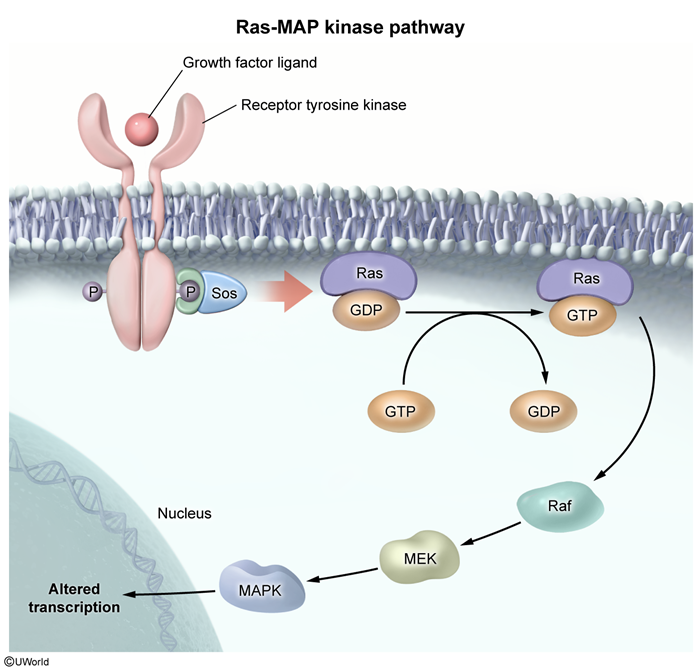
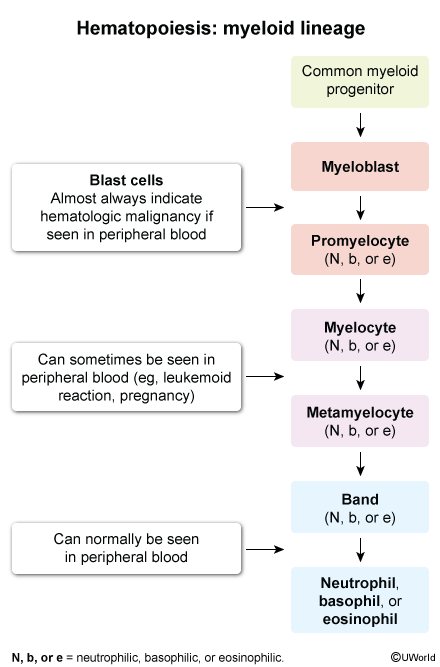
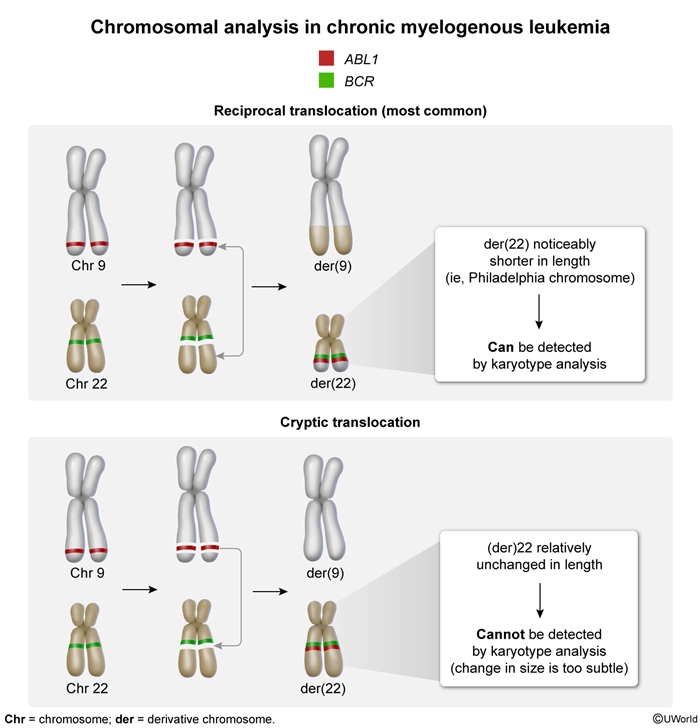
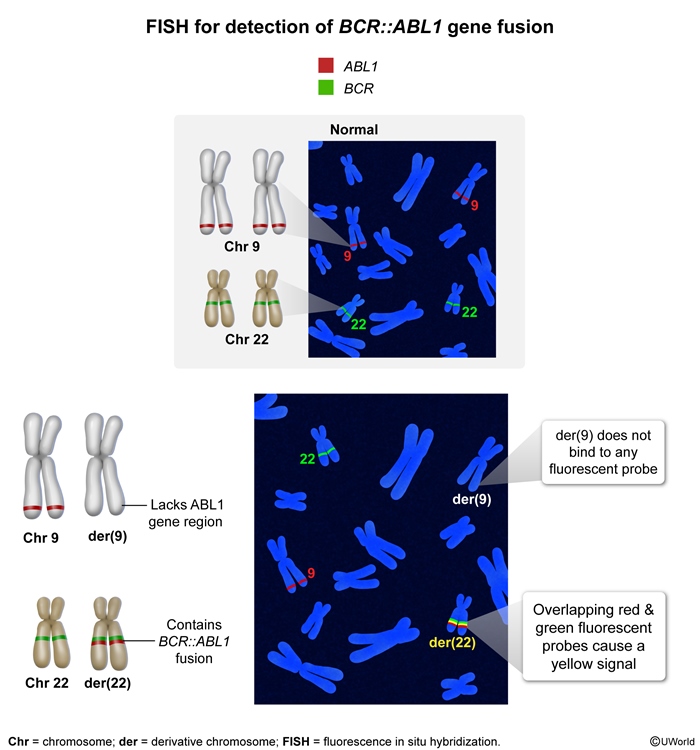
Images
